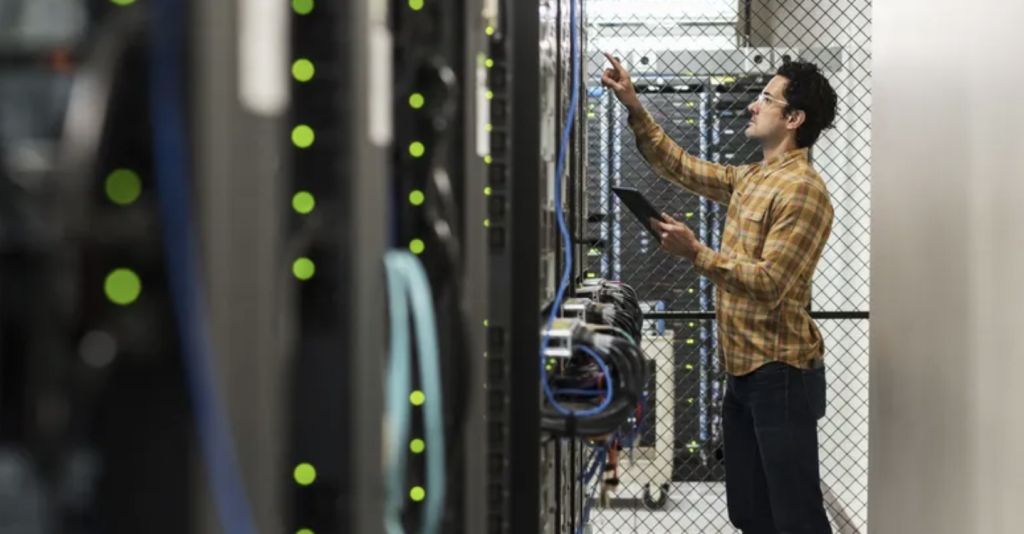The server room is the most important room in your entire office building. It’s the central hub of your business and is where your vital data and information is stored. If your server room goes down, so too does your entire business, so it’s crucial that this room and all its expensive computer equipment is well organised and well maintained. If it isn’t, a minor issue can quickly turn into a major one which could end up costing you serious money.
To help you avoid any such major drama, we’re going to take a look at a few things you can do to keep your server room tidy, well organised and in tip top shape.
1. Cable management
Servers—and the networks on which they operate—are very complex, which means it can be tricky figuring out where an issue may be stemming from. An unruly cable system is going to make that task infinitely more difficult. Remember when you used to squeeze behind the TV to try to unplug the DVD player to take it into another room? If there was a TV and a video game console or cable television box also plugged in, it became a lot more difficult figuring out which cable was which. Now imagine that but with a hundred cables that all look the same. Locating a fault suddenly becomes a tedious task of tracking the length of a cable to find out where it goes. This is completely unsustainable in a business setting.
The solution is to have an effective cable management system in place that takes all the guess work out of locating data flow paths. This may involve colour coding, labelling and using cable tracks.
The aim is to be able to confidently identify both ends of a single cable without having to track the length of it.
This will also help keep the server room looking tidy, as well as improve access as there won’t be loose cables getting in the way of everything.
2. Prioritise accessibility
Continuing on from cable management, you’ll need to make sure every piece of equipment is easily accessible. This means some thought will need to go into the design of the room and how all the computer and network gear is going to be arranged. The last thing you want is to have to remove multiple items just to access the part that needs attention. Having to shut down additional parts of your network because of poor access is not ideal for the running of your business. Instead, take the time to ensure your server room is well designed so every aspect of your tech can be quickly accessed and worked on if necessary.
3. Choose your racks carefully
Server equipment is kept in racks which can come in various sizes, shapes and configurations. The way you organise your server room will depend on the business that you run, so instead of just buying a bunch of generic racks, it’s better to plan in advance how you’re going to organise all your equipment. To do this effectively will require the services of a professional who specialises in designing server rooms, so it may cost a little money initially, but will likely save you in the long run.
4. Temperature control
Servers generate a lot of heat which means they require some pretty serious air conditioning power to keep them within a safe temperature. Server room air conditioning usually involves having multiple units installed so that if one goes down, there is a backup unit to keep the temperature where it needs to be. Without this, a simple air conditioning failure can lead to very serious equipment damage and potentially loss of data. This could be disastrous for your business. It’s recommended you consult with a commercial electrician and commercial air conditioning installer to discuss the best way to keep your server room temperature at the right level.
Additionally, you’ll want to make sure there is adequate flow between server racks and between server units. An improperly designed server room will have pockets where hot air is unable to escape. This needs to be avoided by ensuring proper airflow and therefore consistent temperature throughout the room.
5. Clean it regularly
No matter how well designed your server room is, and no matter how good the airflow, there is no beating dust completely. Dust is inevitable, and if left can begin to cause serious damage to your equipment. Dust will eventually clog up cooling fans and also contaminate circuit boards and other electrical equipment, so you’ll need to maintain a regular cleaning schedule.
Adequate cleaning will involve the use of fairly specific products and equipment such as antistatic cleaning solutions, microfibre mops and cloths and high efficiency particulate air vacuum cleaners.
You may also need to use plastic sheets to protect your servers from nearby cleaning or construction activities to prevent them from collecting any errant dust.
A clean, tidy and well organised server room is going to make life a lot easier for yourself and your IT team, so it’s worth taking that extra time and concentrating a bit more of your investment in it. Adopting best practices along the way will only end up saving you from future heart and wallet ache.




